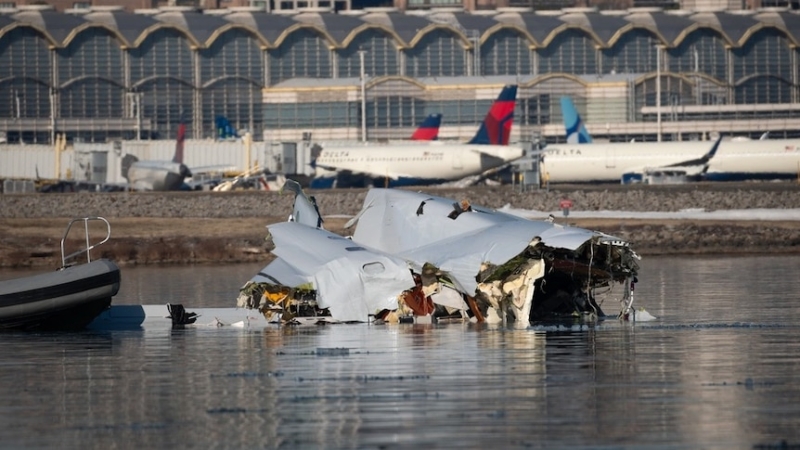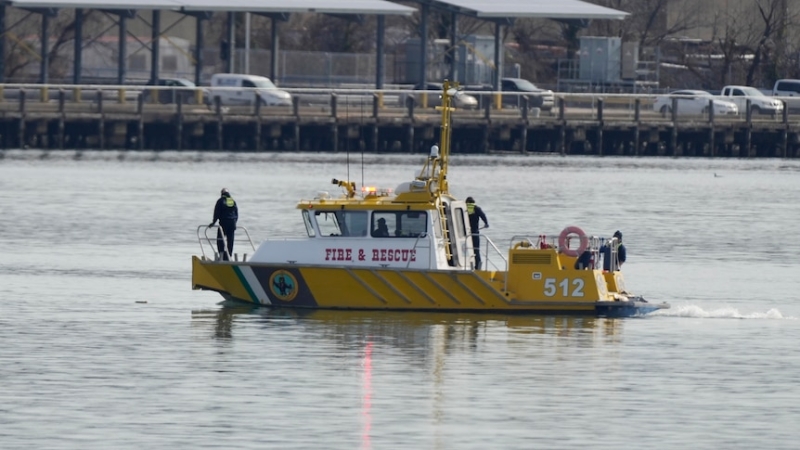In short:
US Army Corps of Engineers recovers parts of a plane wreckage from the Potomac River, including one of the plane's two engines and a large section of the fuselage.
Rescue officials also removed a wing from the water, though fully recovering it will take several days.
What's next?
Data retrieved from an investigation into the collision will be released on Tuesday, local time.
The US Army Corps of Engineers has recovered parts of a plane wreckage from the Potomac River after an American Airlines plane and military Black Hawk helicopter collided over Washington DC last week.
One of the plane's two engines was lifted from the river on Monday morning, local time, and a large section of the fuselage was taken out of the water a few hours later.
Officials also began removing a wing, which they said would take several days or longer.
They hope to remove the cockpit on Tuesday, local time.
Washington DC air crash
Photo shows A boat in the river with the words search and rescue written on it.
Once recovered the wreckage will be moved to a hangar at Washington Reagan National Airport, where it will be examined as part of a National Transportation Safety Board investigation (NTSB) into the cause of the collision
The Washington DC fire department said that officials had positively identified 55 of the 67 people killed in the collision.
Additional human remains have been recovered but not identified, the department added.
Those and additional remains are still in the process of being identified by the medical examiner's office.
Data retrieved from an investigation into the collision last week will be released on Tuesday, NTSB chair Jennifer Homendy said.
"We have much more granular data from Potomac TRACON that we're going to be able to release," Ms Homendy said, referring to a Federal Aviation Administration terminal radar approach facility in Virginia.
Ms Homendy said the NTSB also planned to look at prior near-miss incidents between helicopters and airplanes around the Washington DC airport and could expand the investigation "to other areas where there's military helicopter and air traffic".
She said the NTSB could complete interviews with air traffic control personnel and was interviewing American Airlines and the US Army on the operations side.
Chopper was 'too high' when it collided with plane, Trump says
Photo shows Washington DC air disaster

"We're going to have to understand what are standard operating procedures" for a helicopter training mission, she said.
The detail suggests that the helicopter was flying above 61 meters, the maximum altitude for its route.
Ms Homendy said that data was from DC radar which updated every five seconds, and "that can change in a quick period of time when the helicopter is moving at a good speed".
Data confirmed that the air traffic controller alerted the helicopter to the presence of the CRJ-700 about 2 minutes before the collision.
Reuters/ABC





